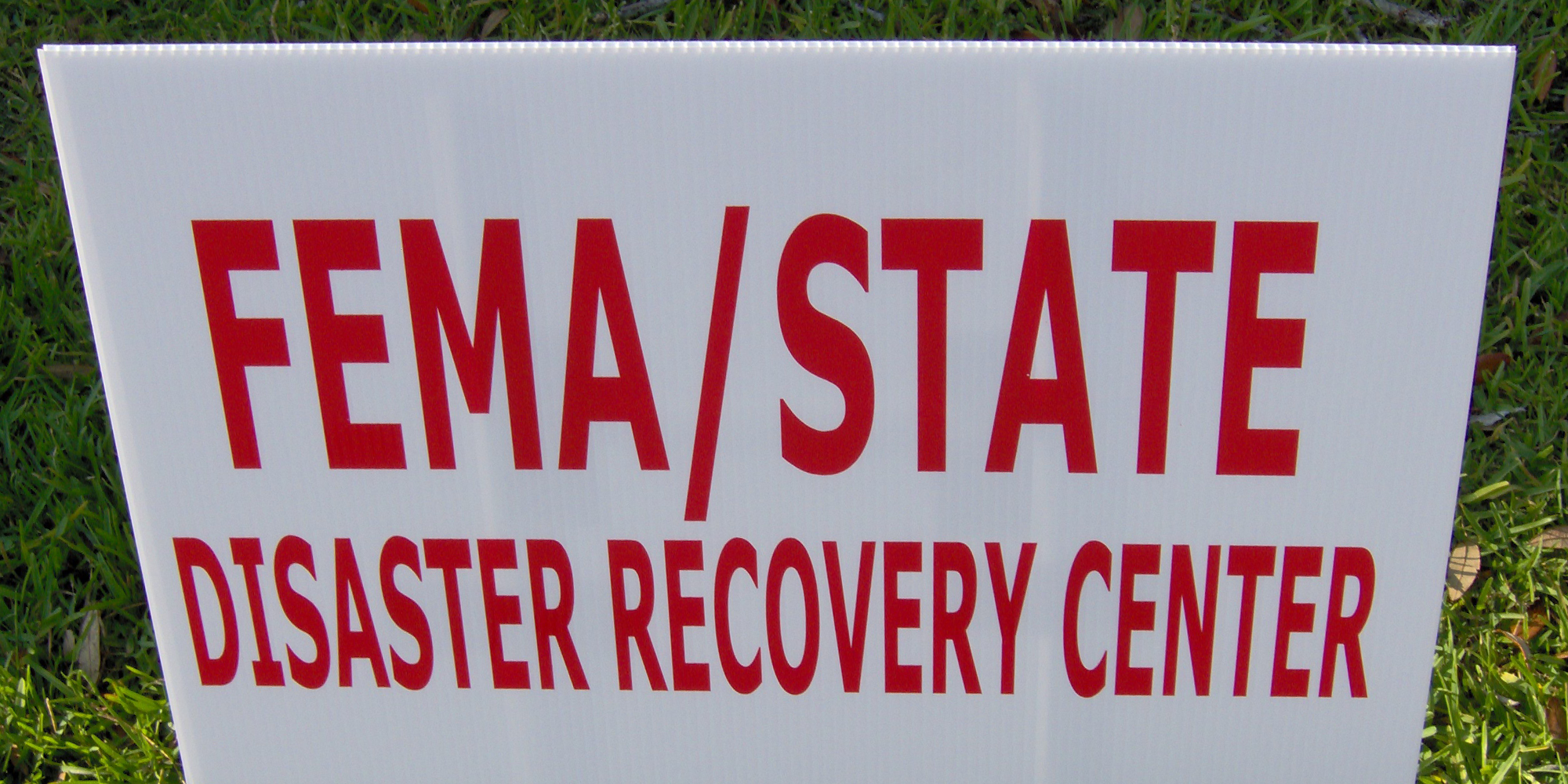Describing disaster survivor visitation trends at FEMA Disaster Recovery Centers (DRCs)

FEMA sign
What is the agency priority?
Federally-recognized natural disasters (e.g., wildfire, flood, tornado) can pose a significant threat to human health and safety. Disaster survivors may face many challenges in the aftermath of a disaster, including damage to their homes, unemployment, and financial instability. Disaster Recovery Centers (DRCs) are set up by FEMA after federally declared disasters to support survivors as they navigate different supports they can apply for and receive. To date there has been no systematic analysis of the volume, timing, and purpose of visits to DRCs. In collaboration with FEMA, this study seeks to provide insights on trends in DRC visitation in the aftermath of declared disasters.
What did we evaluate?
This evaluation aimed to understand the operations and visitor experiences of Federal Emergency Management Agency (FEMA) Disaster Recovery Centers (DRC) to improve their operational efficiency. DRCs are facilities and mobile offices temporarily set up in disaster-affected areas to provide support to disaster survivors. They are staffed to assist survivors with a range of services, for example, checking on the status of benefits or applications, support with FEMA individual financial assistance, or learning about U.S. Small Business Administration (SBA) programs.
How did the evaluation work?
We described the lifecycles of DRCs, the number of visits to DRCs, and the services/activities sought out by survivors when visiting DRCs. The main statistical approach of this analysis was computing cross-tabulations of counts, averages, and averages of maximums. We used DRC daily visit and service/activity count data provided by FEMA for DRCs that opened between January 19, 2022 - April 29, 2022, along with publicly-available data from OpenFEMA and the USDA. The final dataset analyzed included 408 DRCs associated with 33 declared disasters, and 12,167 DRC-day observations.
What did we learn?
The results provide a baseline understanding of the lifecycle of DRCs, when disaster survivors visit DRCs over the course of their lifecycles, and the purpose of DRC visits. While the findings do not support any causal inferences about the effects of DRC visits on disaster survivor outcomes, they provide insights about the variation in DRC lifecycles, the volume of visits over time, and visit purposes. These insights can assist FEMA in optimizing the setup of DRCs to better support survivors (e.g., understanding what services/activities are sought out most for different types of disasters, and when).
For more information, read the supplemental report.
Verify the upload date of our analysis plan on Github.
